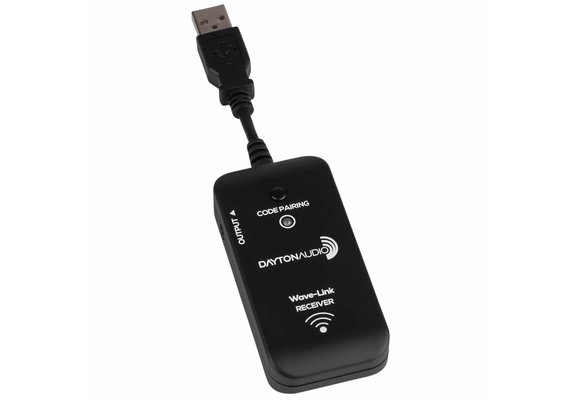For audiophiles, a high-quality music streamer is a modern-day must-have. Choosing one of the best music streamers is how to do them justice if you are trying to play locally stored uncompressed files or access CD-quality songs from top-tier music streaming services. A music streaming device helps you play your favourite songs from your preferred streaming service and all that just from your smartphone. Here at SoundImports, you can buy premium streaming devices from well-known such as Arylic, Dayton Audio, MiniDSP, Monacor and Sure Electronics! Do you want to integrate a streaming module directly into your DIY speaker? Check out our amplifier modules, several of them support Bluetooth and/or Wi-Fi!
What types of streaming services are supported?
The vast majority of high-resolution music formats are supported by most of the streaming services available at SoundImports. Some also boast AirPlay, Bluetooth, DLNA, Wi-Fi, Spotify Connect, Ethernet connectivity and USB connections. Internet radio comes as standard, of course - as do smartphone and/or tablet control apps. Therefore, almost every possible streaming service is supported; Spotify, Amazon Music, Apple Music, Deezer – you name it!
What is the difference between Multi-Channel and Multi-Zone/Multi-Room?
Here at SoundImports, you will find streaming devices that support Multi-Channel and/or Multi-Zone/Multi-Room streaming – but what is this, and where is the difference?
A multi-channel streaming device can essentially reproduce the same audio source over multiple speakers at the same frequency. This is usually suitable for commercial applications such as restaurants and retail outlets. However, it is not ideal for residential audio systems, which generally involve a much higher level of control for adjusting various sound levels in different rooms, switching rooms on and off remotely and playing different audio sources in different rooms. This is where Multi-Zone/Multi-Room streaming devices come into play.
Each region (zone) of a multi-zone streaming platform needs its own independent power.
A single multi-room streaming device usually serves a single zone. It can be wirelessly synchronised with several other similar amplifiers to reach different areas. For example, single-zone streaming devices for each room are needed if you choose to add speakers in separate rooms such as the kitchen, bathroom, and bedroom with the ability to play and monitor music for each room individually.
The SD-9 from SMSL uses an ARM SoC and a CPLD pair as its architecture. The SoC is in charge of data decoding, while the CPLD is in charge of audio signal clock control. Two oscillators (22.5792MHz and 24.576MHz) provide the clock signal in order to dramatically eliminate jitter and provide extremely accurate sound reproduction.

 Home audio
Home audio  Audio components
Audio components  Crossover components
Crossover components  Test & measurement
Test & measurement  DIY kits
DIY kits  Accessories
Accessories  New products
New products  Home audio
Home audio  Audio components
Audio components  Crossover components
Crossover components  Test & measurement
Test & measurement  DIY kits
DIY kits  Accessories
Accessories  New products
New products  Speakers
Speakers Amplifiers
Amplifiers DAC converters
DAC converters DSP modules
DSP modules Streamers
Streamers Turntables
Turntables Woofers
Woofers Tweeters
Tweeters Exciters
Exciters Bass shakers
Bass shakers Plate amplifiers
Plate amplifiers Amplifier modules
Amplifier modules Single board computers
Single board computers Assembled crossovers
Assembled crossovers Printed Circuit Boards (PCB)
Printed Circuit Boards (PCB) Capacitors
Capacitors Resistors
Resistors Coils
Coils Circuit Breakers
Circuit Breakers Crossover tools
Crossover tools Screw terminals
Screw terminals Acoustic measurements
Acoustic measurements Electric measurements
Electric measurements Sound level meters
Sound level meters DIY amplifier kits
DIY amplifier kits DIY component packs
DIY component packs DIY speaker kit
DIY speaker kit DIY subwoofer kits
DIY subwoofer kits DIY bluetooth speaker
DIY bluetooth speaker DIY electronics kits
DIY electronics kits Binding posts
Binding posts Cabinet Hardware
Cabinet Hardware Cables
Cables Connectors
Connectors Speaker cabinets
Speaker cabinets Electromechanics
Electromechanics Power supplies
Power supplies Speaker repair
Speaker repair Workshop & tools
Workshop & tools Amplifier accessories
Amplifier accessories Stands & mounts
Stands & mounts Gift voucher
Gift voucher Books
Books New products
New products









 Speakers
Speakers Amplifiers
Amplifiers DAC converters
DAC converters DSP modules
DSP modules Streamers
Streamers Turntables
Turntables Woofers
Woofers Tweeters
Tweeters Exciters
Exciters Bass shakers
Bass shakers Plate amplifiers
Plate amplifiers Amplifier modules
Amplifier modules Single board computers
Single board computers Assembled crossovers
Assembled crossovers Printed Circuit Boards (PCB)
Printed Circuit Boards (PCB) Capacitors
Capacitors Resistors
Resistors Coils
Coils Circuit Breakers
Circuit Breakers Crossover tools
Crossover tools Screw terminals
Screw terminals Acoustic measurements
Acoustic measurements Electric measurements
Electric measurements Sound level meters
Sound level meters DIY amplifier kits
DIY amplifier kits DIY component packs
DIY component packs DIY speaker kit
DIY speaker kit DIY subwoofer kits
DIY subwoofer kits DIY bluetooth speaker
DIY bluetooth speaker DIY electronics kits
DIY electronics kits Binding posts
Binding posts Cabinet Hardware
Cabinet Hardware Cables
Cables Connectors
Connectors Speaker cabinets
Speaker cabinets Electromechanics
Electromechanics Power supplies
Power supplies Speaker repair
Speaker repair Workshop & tools
Workshop & tools Amplifier accessories
Amplifier accessories Stands & mounts
Stands & mounts Gift voucher
Gift voucher Books
Books New products
New products
